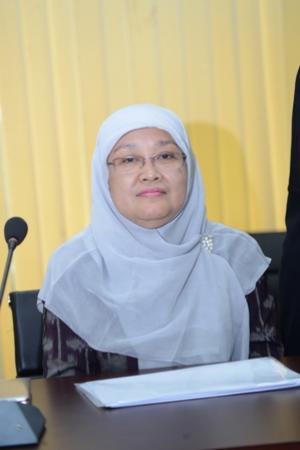A Standard Operating Procedure (SOP) for the cultivation of medicinal plants is needed for the various medicinal plants as a result of the peculiarities of each species of the medicinal plants. The standardized preparation of raw materials is required for the variety of diseases identified, such as infectious, non-infectious, and degenerative diseases existing at this time, and in the future (new emerging diseases / NED). Tropical rain forests contain more than 50 percent of species of medicinal plants on earth, and this is a source of medicinal plants and raw materials. Of 90 thousand species of plants growing in Indonesia, 9,600 plants are identified as being used medicinal plants.
“The total need for herbal ingredients of 55 780 tons comes from only 25-30 species which contribute 62-65 per cent of the world’s needs. A total of 250 thousand species of medicinal plants in the world are identified to have medicinal value, 20 thousand species of which have been documented and only 5 thousand species are studied phytochemically. The international market value of medicinal plants per year is over 60 billion dollars and expected to reach 5 trillion dollars in 2050," said Professor of Agronomy and Horticulture, Faculty of Agriculture, Bogor Agricultural University (Faperta-IB) Prof. Dr Sandra Arifin Aziz during a press conference in the Meeting Room of Board of Trustees, Baranangsiang campus of IPB Bogor, on Thursday (23/4).
During the press conference for the Pre scientific speech to be held on Saturday (25/4), Prof. Sandra says that the trend back to nature has been exploited by many countries in the world including those in Southeast Asia, taking the advantages of the Indonesian market.
In Indonesia, the traditional medicine trade volume in 2002 reached 150 million dollars, while approximately 61 percent of Indonesia’s population is known as already being accustomed to consuming traditional medicine known as "jamu” or herbals. What is of great concern is the need of 1,023 traditional medicine companies for raw materials, consisting of 118 traditional medicine industries (with assets of over Rp. 600 million), and 905 small industries of traditional medicine (with assets of less than Rp. 600 million), is met up to 85 percent of raw materials from the forest and home yards without cultivation efforts.
Therefore, to produce standardized fitofarmaka, the steps taken by the Department of Agronomy and Horticulture, Faculty of Agriculture and the Medicinal Studies Center (PSB) of the Institute for Research and Community Service (LPPM) IPB is to make an agro-biophysical study of selected medicinal plants and their domestication; a study of plant supply, a study of medicinal plant breeding; multi-location test, preparation of Good Agricultural Practices (GAP) and location-specific SOP of technology, and calibration of location-specific technology. These studies resulted in the new superior clones, location- specific varieties, location-specific cultivation technology, and GAP of specific-location technologies.
At the level of development the production is carried out through the implementation of GAP and Good Agricultural and Collection Practices (GACP) for selected and standardized medicinal plants among the farmers and manufacturers, and by increasing productivity through sustainable site-specific technology adaptable to climate changes.
The Ministerial Regulation of Health of the Republic of Indonesia No. 88/2013 states that the services of traditional medicines, traditional health, classification, registration and traditional medicine products are part of the government’s desire to take advantage of the Indonesian biological resources and the riches of traditional health to be integrated into the formal health care system.
Until now GAP of medicinal plants by the Directorate of Aquaculture and Postharvest of Vegetable and Medicinal Plants of the Ministry of Agriculture has not been issued, but the direction given is the cultivation of medicinal plants should be done with organic systems that follow the rules of GAP and GACP and producing natural products.
"Until 2011, there was only the application of 5 (five) SOPs set up Ministry of Agriculture, namely ginger in Temanggung, temu kunci in Purworejo, purwoceng in Wonosobo, kencur in Boyolali, and temulawak in Semarang. Practices complying with GAP are for ginger in Karanganyar and Magelang, temukunci in Purworeajo, kencur in Boyolali and temulawak in Semarang," he said. (Mtd)




